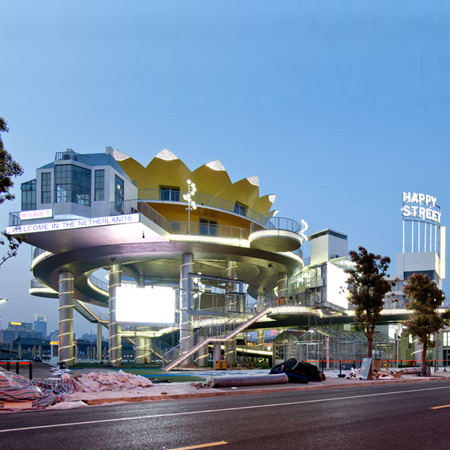
Netherlands Pavilion by John Kormeling for Shanghai Expo 2010
Shanghai Expo 2010: here are some photographs of the Dutch pavilion by John Kormeling at Shanghai Expo 2010, taken by photographer Montse Zamorano.
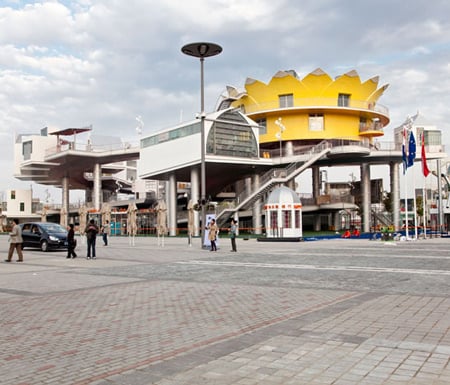
Named Happy Street, the pavilion consists of a walkway in a figure-of-eight, supported on stilts.
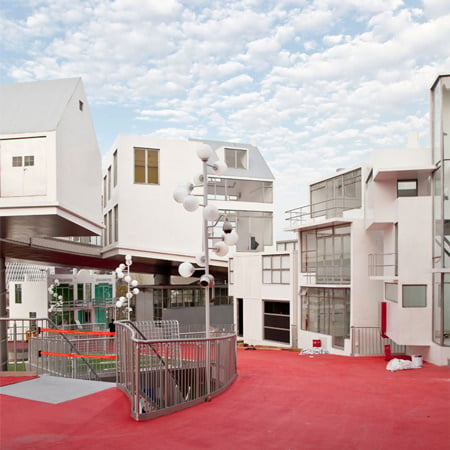
Small houses extend from the sides of this walkway containing the exhibits.
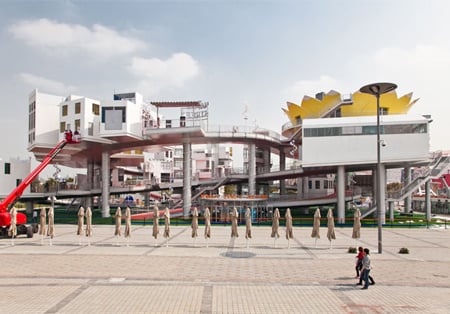
The route culminates in a yellow crown-shaped hall and a restaurant modelled on an upside-down boat.
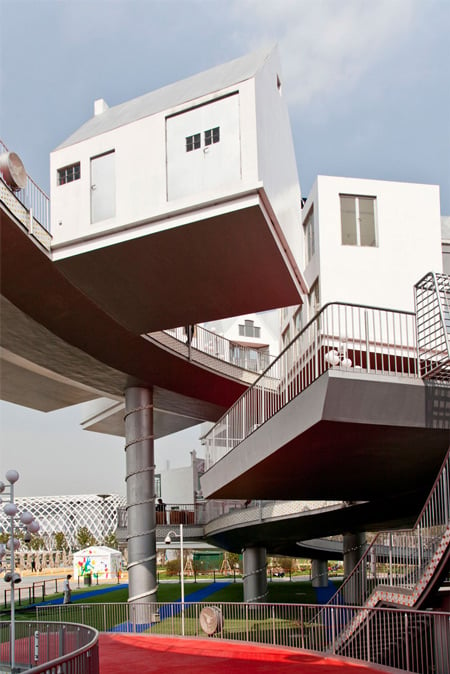
More photos by Montse Zamorano: French Pavilion by Jacques Ferrier Architectures
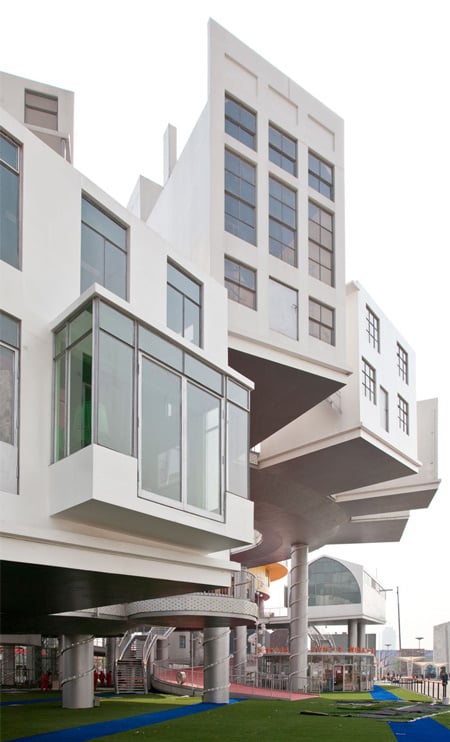
See all our stories about Shanghai Expo 2010 in see all out stories about the expo here.
Here's some more information from the Expo orgainisers:
The Netherlands Pavilion, known as "Happy Street," is constructed in a figure eight – a lucky number that suggests fortune in Chinese culture. It is mainly composed of a 400-meter pedestrian street that curves in a figure of eight and 26 small houses along the street. Built completely on stilts, the street looks like a suspended roller coaster.
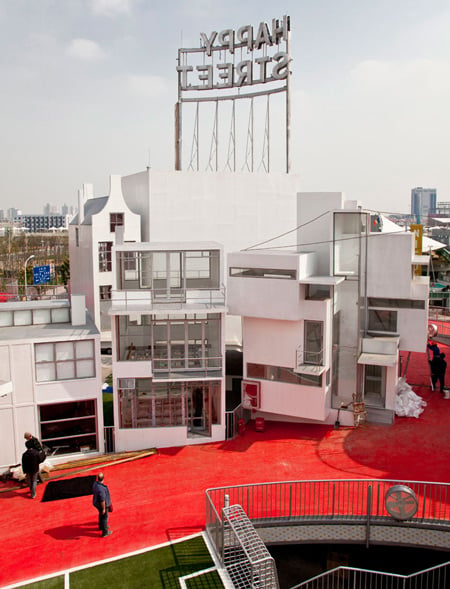
It is an open pavilion with a happy atmosphere. Each of the 26 distinctive small houses forms a mini pavilion that celebrates Dutch innovation in the use of space, energy and water. "Happy Street" will show that the Netherlands is innovative and progressive in the fields of sustainability, environment and urban development.
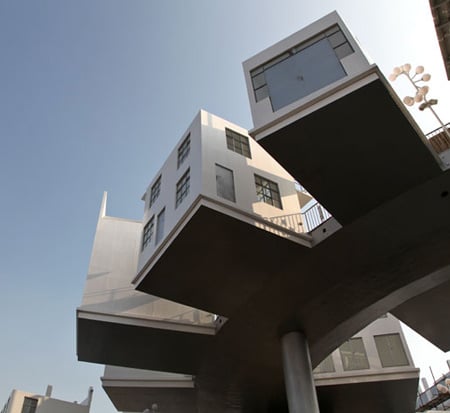
Highlight 1: Pavilion without a Gate
Visitors walking on the "Happy Street" will be surprised to find that the 400-meter long street actually has no gate or single point of entry. Instead, entrances to the pavilion can be found everywhere, allowing visitors to walk into this "Happy Street" from wherever they like. This multi-door design is quite effective and reflects the "typical Holland-style." During the evenings, colorful and glorious lighting will create a dreamland for visitors.
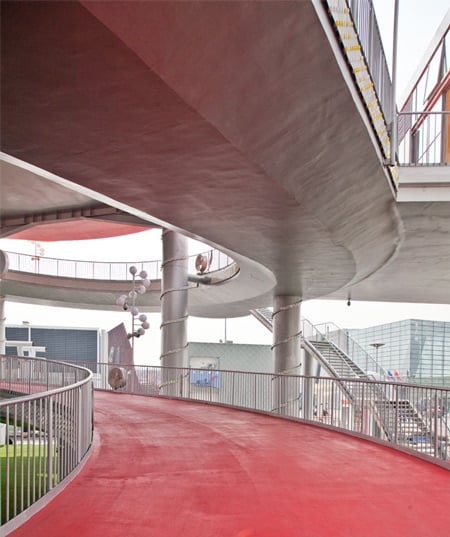
Highlight 2: View through Windows
Small exhibit rooms line the "Happy Street," featuring three sectors of urban life, the sectors of residence, work and industry. They collectively showcase innovations in energy, water and space. Instead of arranging these houses in a monotonous straight line, the designers have made a smart decision - "hanging" these tiny houses on the street and "inviting visitors to enjoy the exhibition through windows."
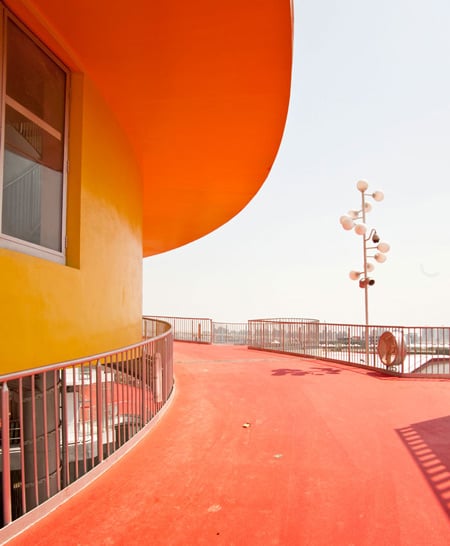
Highlight 3: Orange Eco-friendly Sunshades
About 50 sunshades are erected on the street. The orange color of the fabric symbolizes Holland. The hi-tech coating over the fabric is designed to absorb and gather energy.
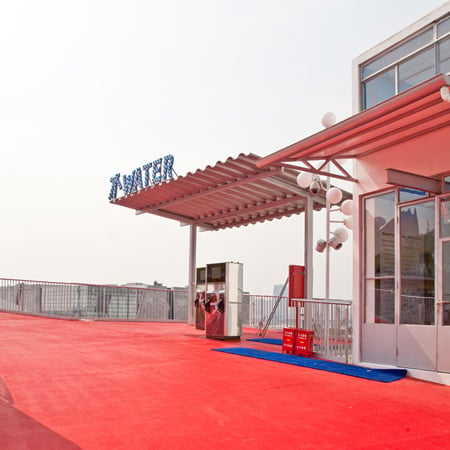
Highlight 4: CINEAC Club from Amsterdam
Visitors will see a small house named "CINEAC" on the "Happy Street." In Amsterdam, CINEAC, originated from a functional cinema in 1934, is a famous club and a popular concert hall. But the CINEAC in the Netherlands Pavilion will not be a real cinema or club. It will serve as a symbol for the "Happy Street," meaning that the street offers great fun with its clubs, shops and cinemas.
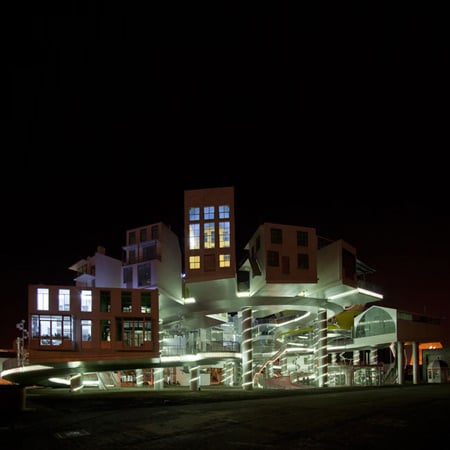
Highlight 5: VIP Crown Hall
A free-standing small house in the shape of an engineering boat sits on one side of the pavilion area. This is the public restaurant in the Netherlands Pavilion. The boat-shaped restaurant is inspired by the landscape of Holland, with a part of the land beneath sea level. Another small house will follow, which is themed water preservation. Visitors can see how the water from the Huangpu River is purified and be able to drink refreshingly clean water.
See also:
.
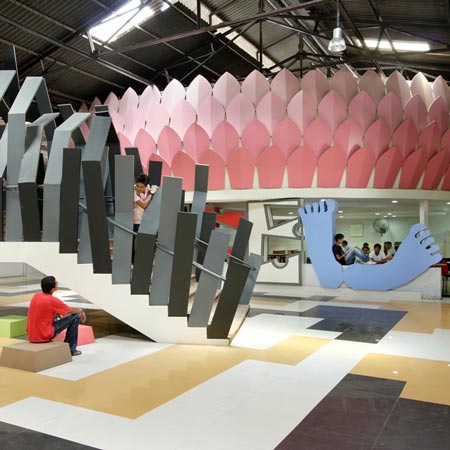 |
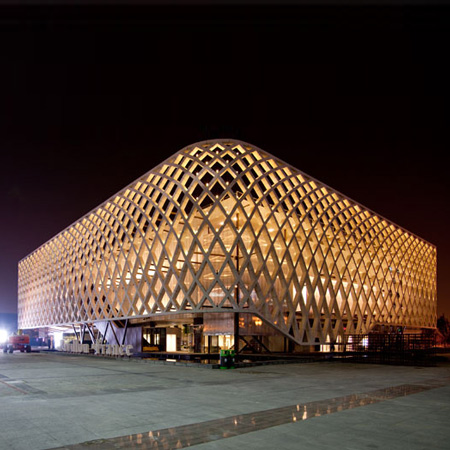 |
see all out stories about the expo here |
| X Block by Planet 3 Studios Architecture |
French Pavilion by Jacques Ferrier Architectures |
see all out stories about the expo here |